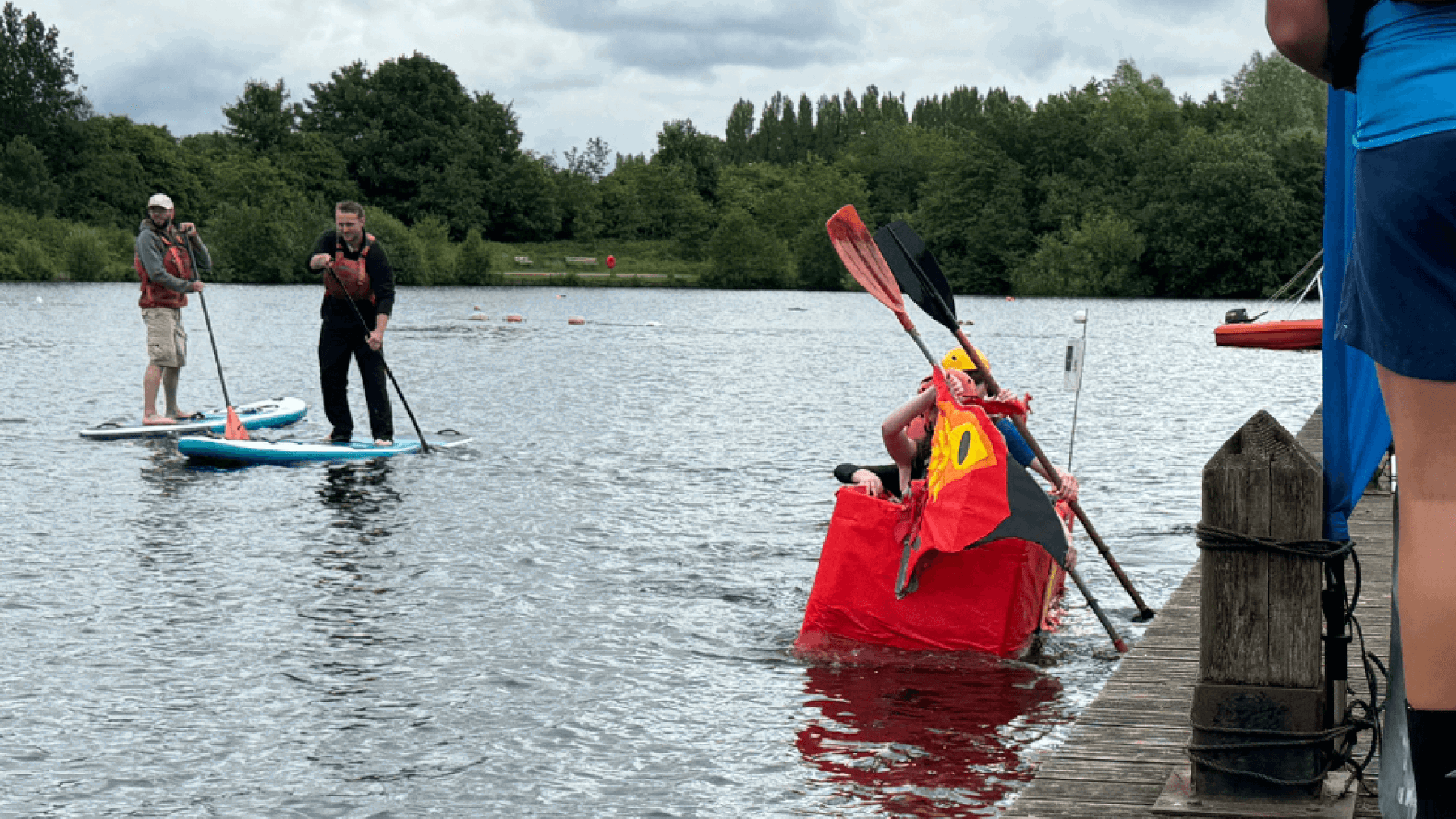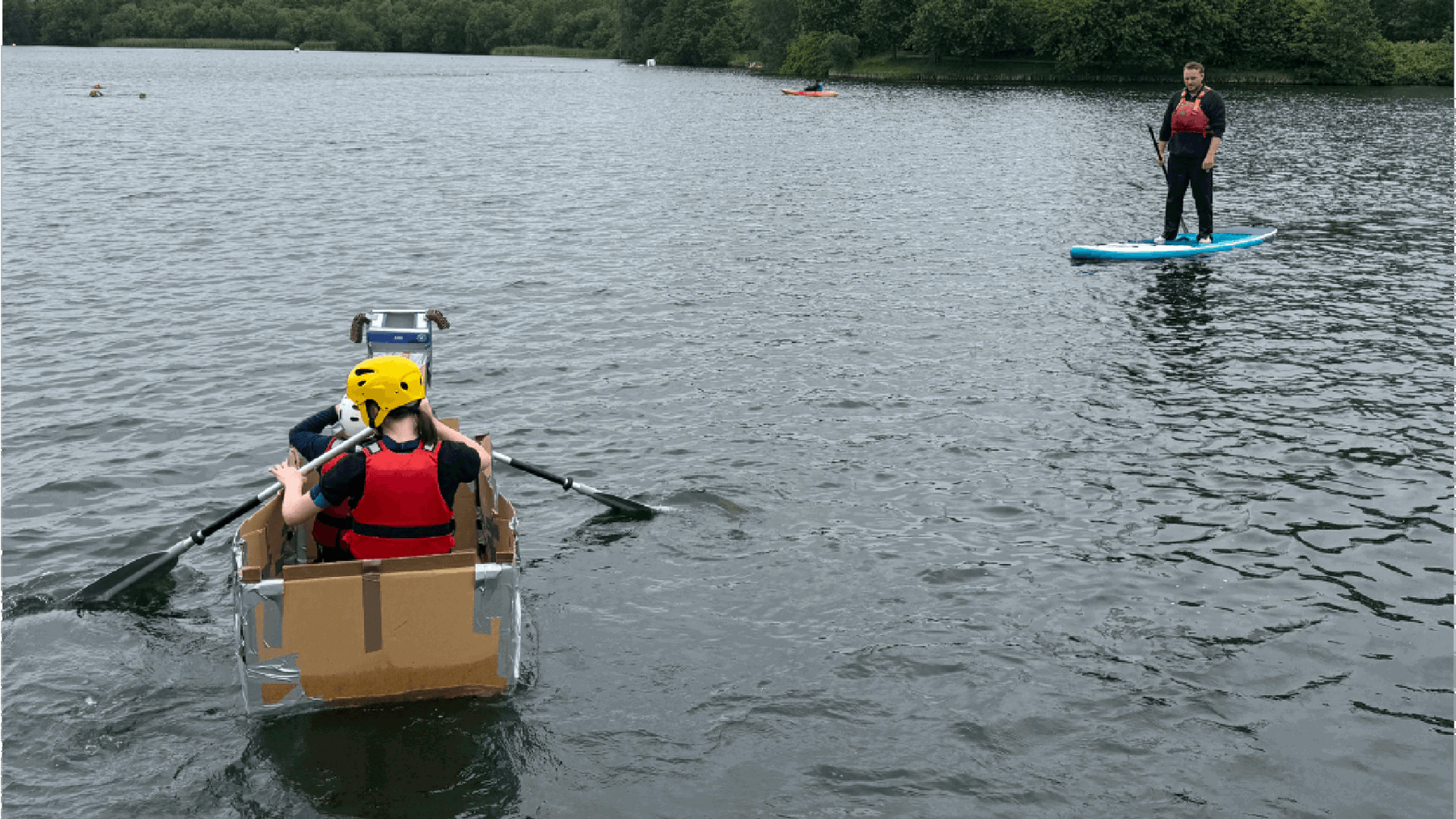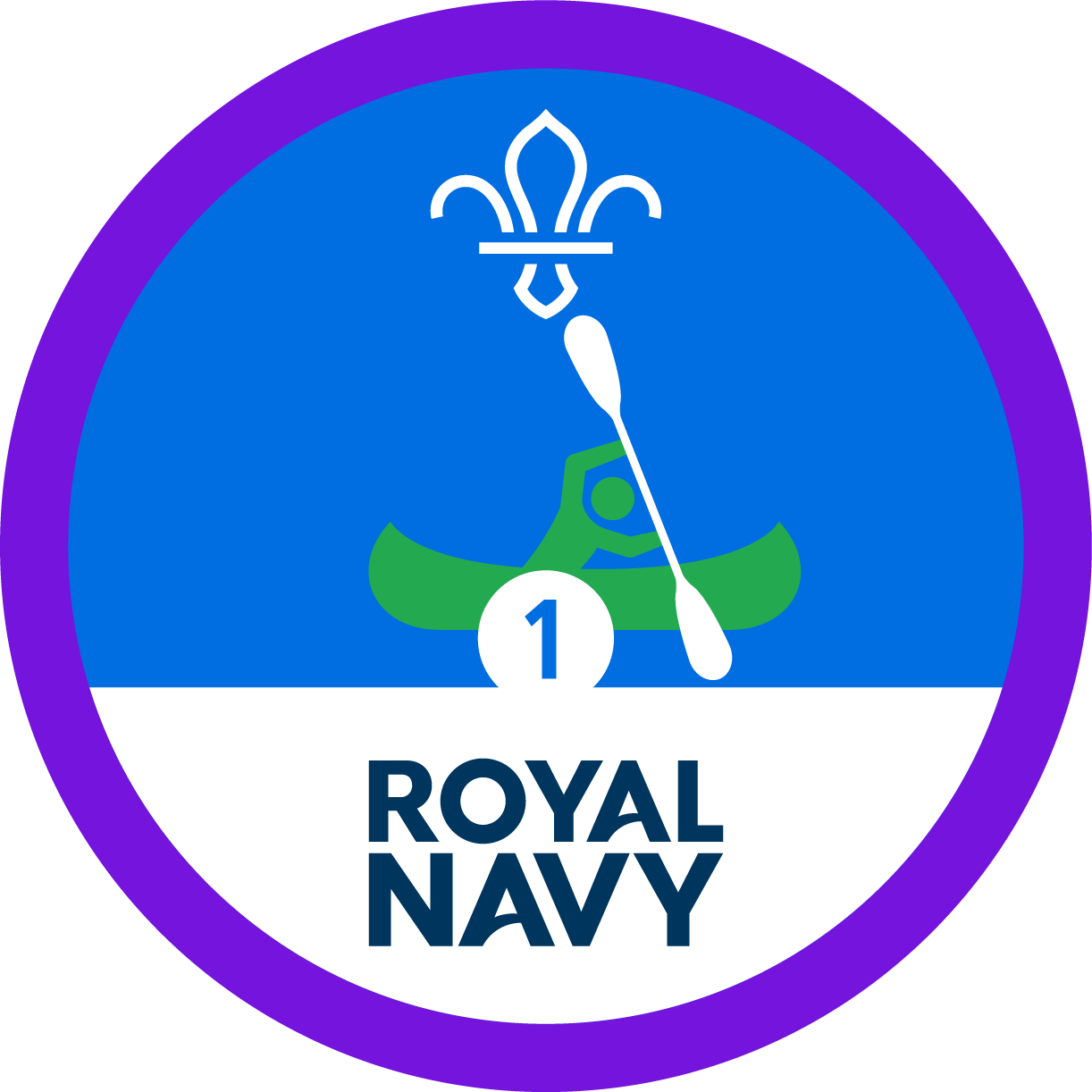
Cardboard canoes
You’ll need
- Cardboard
- Duct Tape
- Packing Tape
- Rope
- String
- Buoyancy aids
- Paddles
- Helmets
- Water safety equipment
Before you begin
- Use the safety checklist to help you plan and risk assess your activity. There's also more guidance to help you carry out your risk assessment, including examples.
- Make sure all young people and adults involved in the activity know how to take part safely.
- Make sure you have enough adult helpers. You may need some parents and carers to help.
- This activity’s designed for when you’re spending time on the water. It was created as an alternative to traditional rafting.
- Consider using an online search engine, such as Google, to look up examples of different cardboard creations to use as inspiration. You may want to print some images of for inspiration to show to your Group.
- Ask everyone to bring in clean cardboard that would normally have been recycled. If you’ve got space, you could build a collection over a few weeks.
- You could also ask local businesses or supermarkets to save some cardboard for your group. Make sure that everything that you’re using can be recycled after the activity.
- Make sure that there is adequate supervision for participants using sharp objects or scissors.
- You may wish to open the event up to other groups in your area to have a local event, with each group designing one or two boats each.
- Before starting this activity, everyone will need to be told and understand the basics of water safety. Try our water safety activities and you can use RNLI water safety guidance.
- Everyone will need to know the basics of rafting, such as how to paddle or what to do if you fall out. Take a look at our rafting guidance.
- Always use our safety guidance to stay safe when doing activities with, in, or near water. Everyone should be able to swim 50m wearing the clothing or equipment for the activity. Non-swimmers will need additional support.
- Always have a safety briefing before running this activity. Remind everyone they should always have a firm grip on their paddle and be aware of the space around them.
- Make sure the outdoor area you visit is accessible for everyone, choosing a suitable place for drop off and collection.
- Make sure everyone knows where and when to meet, and knows what to bring. People should come dressed for the weather and activity, being prepared for the weather to change. Ask everyone to bring a spare set of clothes, towels and spare shoes.
- It’s best to survey the area beforehand so you can set appropriate boundaries and check for additional hazards, such as ladders, overhanging branches, risks of slips and trips, or diving boards. Make sure to check surfaces and reduce the risk of slipping, where possible.
- Always check the weather forecast and sunset before doing the activity outside.
- Make sure you have all the safety equipment you need and check it's in good condition. In Scouts, all members taking part in water activities, excluding swimming, scuba diving and snorkelling, must wear an EC or ISO approved buoyancy aid or life jacket.
- You should also think about any roles that will be needed on the day, then ask for adult volunteers to help. You may want someone to be first aider, to help boats in and out, to help with safety equipment, to help with timings, and to help on the water. Make sure everyone knows what their roles involve, and make sure any volunteers have read and understood the Yellow Card.

Planning and building the boats
- Gather everyone together and explain that you’re going to be make boats out of cardboard to race.
- As a group, decide on how your race will work once the boats are made.
- You should think about the rules and how the competition will be scored. For example, you might only allow each boat to carry three people. You may wish to race the boats one at a time, with the fastest time winning, but also be judged on other categories, such as best design or best stability.
- Once everyone has decided on the rules, let everyone get into small groups, then give out pens and paper to let groups design their boats.
- Remind everyone to considering lots of different things in their design, such as stability, buoyancy, aerodynamics, design and creativity. People should also think about the materials they will need.
- Once ready, and once you have enough cardboard, the teams should use the provided materials to construct their boats. It’s okay if people’s designs change.
- Once all boats are constructed and decorated, make sure they’re stored in a safe and dry area.
Holding the race
- The activity leader must have an adventurous activities permit with the right level and permissions for your group.
- Ensure the venue is suitable, what is the water access like? does it have amenities like changing facilities or toilets? Is it accessible to the public?
- On your chosen day, check the weather, visibility and wind speed before continuing with your event.
- Make sure all the cardboard boats are checked for condition and damage before use as well as the safety equipment.
- During the event, make sure to have a safety briefing, include expectations for behaviour.
- Ensure each participant has the correct clothing, shoes and correct fitting helmet and buoyancy aid.
- You may want to have someone dedicated to supervising and watching the water’s edge or monitoring behaviour.
- You may want to have some adults on the water while the activity is taking place to help anyone if their cardboard boat collapses. For example, you could have adults on paddleboards to go alongside the racers.
- You may also want to put a restriction line for the water’s edge to prevent people getting too near and have people wear high-visibility jackets.
- At the end, make sure everyone gets warm and dry. You may wish to announce winners or the fastest boat. You could give out medals and trophies. All the boat materials should be removed from the water and environment, such as with a net or by someone on a kayak.
- Wet cardboard can’t be recycled, however wet cardboard can find new purpose as a composting aid. Why not shred it into smaller pieces and mix it with other compostable materials, then spread it on the soil?

Reflection
- This activity was all about having fun on the water and being creative. How well did the cardboard boats do? Think about your team. How did you work as a team? Did you support each other? Was everyone able to contribute ideas and be listened to? What could you have done better?
- Think about your design. Did it do okay? What went well? Did you have to change anything or rethink it, as it didn’t work? Is there anything you’d do differently next time? What did you think of or like about other people’s designs? Would you be inspired by any of these designs next time?
- Think about the race. What was it like paddling? Did your boat stay afloat? How did you paddle together – did you do well? What could’ve gone better? The boat might have started sinking. If it did, how did you support each other?
Safety
All activities must be safely managed. You must complete a thorough risk assessment and take appropriate steps to reduce risk. Use the safety checklist to help you plan and risk assess your activity. Always get approval for the activity, and have suitable supervision and an InTouch process.
- Poles and long objects
Be careful when moving poles or long items. Take care if the ends are sharp. Have appropriate supervision for this activity.
- Near water
Manage groups carefully when near water. The guidance on activities near water will help you to keep your group safe.
- Water games and activities
Be careful when doing activities with, in, or near water. Check surfaces and reduce the risk of slipping where possible. Make sure you have appropriate supervision for this activity.
- Active games
The game area should be free of hazards. Explain the rules of the game clearly and have a clear way to communicate that the game must stop when needed. Take a look at our guidance on running active games safely.
- Scissors
Supervise young people appropriately when they’re using scissors. Store all sharp objects securely, out of the reach of young people.
- Glue and solvents
Always supervise young people appropriately when they’re using glue and solvent products. Make sure there’s plenty of ventilation. Be aware of any medical conditions that could be affected by glue or solvent use and make adjustments as needed.
You must always:
- Complete a risk assessment
- Have the right ratios of number of adults to provide suitable supervision
- Set up an InTouch process
- Know what to do in an emergency
- Share information with parents and carers with an activity information form
- Get approval from your Lead Volunteer.
Be safe outdoors:
- Check the weather forecast
Swimming:
- If paddling do a risk assessment, make sure you have appropriate safety cover in place and that everyone is visible above water at all times.
- Swimming is defined in POR 9.13.9
- Manage your swimming activity in line with the swimming rules and guidance.
- Manage a Scout owned swimming pool in line with HSE 179 Managing Health and Safety in Swimming pools
Be safe in water:
Everyone should be able to swim 50 m wearing the clothing or equipment for the activity. Non-swimmers will need additional support.
Water can be dangerous - be aware of the risks.
The category of water depends on how safe the water is. Use our waterways directory to check.
Be sure to manage the group when near water, keeping everyone safe.
Make sure that all equipment is fit for purpose and in good condition:
Everyone must wear a life jacket or buoyancy aid.
The instructor must make sure boats are seaworthy.
There are regulations you must follow if you are hiring a boat.
This activity can be led by you or someone else in Scouts:
The activity leader must have an adventurous activities permit with the right level and permissions for your group.
To make this activity harder, you could make the race longer, add in obstacles or reduce the number of resources they can use.
Not everyone will want to go into the water, but there are many other roles during this activity, such as scoring and refereeing.
All Scout activities should be inclusive and accessible.
If you enjoyed this activity, you could try our other kayaking activities or water sports badges. Anyone who’s keen on kayaking could check out British Canoeing for information on training and awards.
